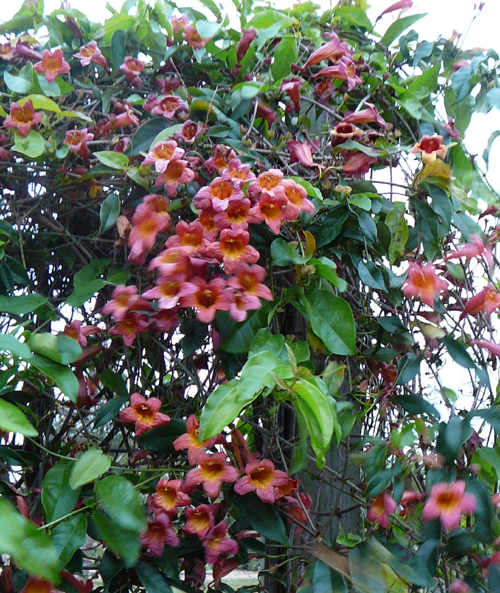
by Sheila Dunning | Mar 22, 2016
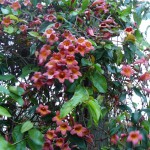 According to the Atlas of Florida Vascular Plants, there are more than 4,200 plant species naturally occurring in the state. Nearly 3,000 are considered native. The Florida Native Plant Society (FNPS) defines native plants as “those species occurring within the state boundaries prior to European contact, according to the best available scientific and historical documentation.” In other words, the plants that grew in natural habitats that existed prior to development.
According to the Atlas of Florida Vascular Plants, there are more than 4,200 plant species naturally occurring in the state. Nearly 3,000 are considered native. The Florida Native Plant Society (FNPS) defines native plants as “those species occurring within the state boundaries prior to European contact, according to the best available scientific and historical documentation.” In other words, the plants that grew in natural habitats that existed prior to development.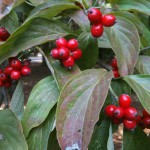
Native plants evolved in their own ecological niches. They are suited to the local climate and can survive without fertilization, irrigation or cold protection. Because a single native plant species usually does not dominate an area, there is biodiversity. Native plants and wildlife evolved together in communities, so they complement each other’s needs. Florida ranks 7th among all 50 states in biodiversity for number of species of vertebrates and plants. Deer browse on native vines like Crossvine (Bignonia capreolata), Trumpet Creeper (Campsis 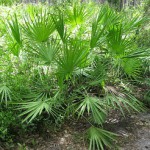 radicans), Yellow Jessamine (Gelsemium sempervirens) and Trumpet Honeysuckle (Lonicera sempervirens). The seeds and berries of Black-eyed Susan (Rudbeckia fulgida), Flowering Dogwood (Cornus florida) and Dahoon holly (Ilex cassine) provide vital food for songbirds, both local and migratory. Saw palmetto (Serenoa repens) provides cover for numerous birds and small mammals, as well as, reptiles.
radicans), Yellow Jessamine (Gelsemium sempervirens) and Trumpet Honeysuckle (Lonicera sempervirens). The seeds and berries of Black-eyed Susan (Rudbeckia fulgida), Flowering Dogwood (Cornus florida) and Dahoon holly (Ilex cassine) provide vital food for songbirds, both local and migratory. Saw palmetto (Serenoa repens) provides cover for numerous birds and small mammals, as well as, reptiles.
Non-native plants become “naturalized” if they establish self-sustaining populations. Nearly one-third of the plants currently growing wild in Florida are not native. 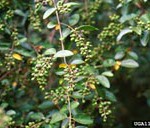 While these plant species from other parts of the world may provide some of the resources needed by native wildlife, it comes at a cost to the habitat. These exotic plants can become “invasive”, meaning they displace native plants and change the diverse population into a monoculture of one species. Chinese privet (Ligustrum sinense), Popcorn trees (Triadica sebifera) and Cogongrass (Imperata cylindrica) have
While these plant species from other parts of the world may provide some of the resources needed by native wildlife, it comes at a cost to the habitat. These exotic plants can become “invasive”, meaning they displace native plants and change the diverse population into a monoculture of one species. Chinese privet (Ligustrum sinense), Popcorn trees (Triadica sebifera) and Cogongrass (Imperata cylindrica) have 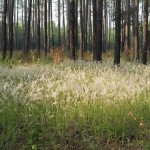 changed the landscape of Florida over the past decade. While Water hyacinth (Eichhornia crassipes) and Hydrilla (Hydrilla verticillata) have change water flow in many rivers and lakes. These invasive species cost millions of taxpayer dollars to control.
changed the landscape of Florida over the past decade. While Water hyacinth (Eichhornia crassipes) and Hydrilla (Hydrilla verticillata) have change water flow in many rivers and lakes. These invasive species cost millions of taxpayer dollars to control.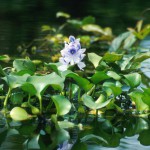
By choosing to use native plants and removing non-native invasive plants, individuals can reduce the disruptions to natural areas, improve wildlife habitat and maintain Florida’s biodiversity.
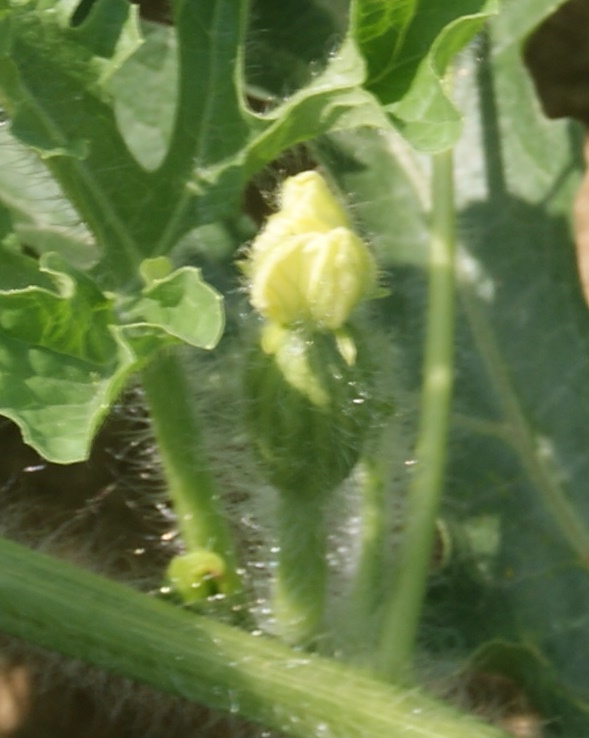
by Matthew Orwat | Mar 11, 2016
With weather warming up and daylight savings time right around the corner, we are in the midst of prime time for planting spring vegetable gardens. Gardeners routinely growing vegetable gardens should note that it is best to rotate plant families when planning a vegetable garden. See the table below to determine which families should be rotated.
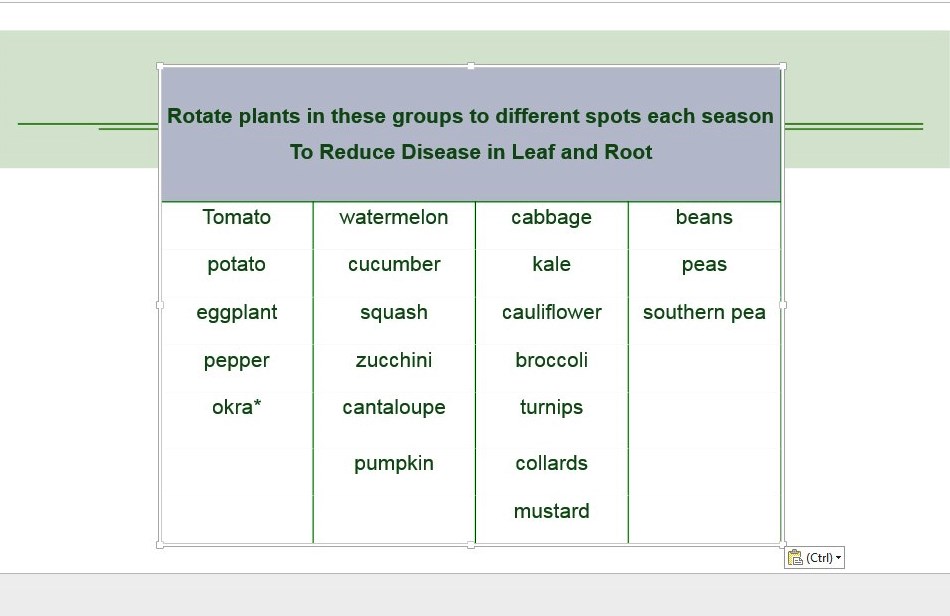
* okra is not a member of the solanaceae, but may be included as part of the solanaceae rotation
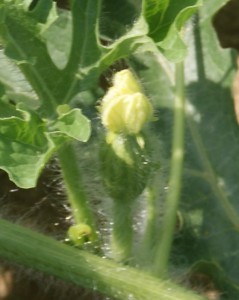 Vegetable gardens should be located on sites receiving at least 6 hours of sun per day, consisting of well-drained soil rich in organic matter. Since most Florida soils are low in organic matter, composted organic matter should be added before or at planting time. Uncomposted organic matter should be mixed into soil one month before planting. Vegetable garden pH should be between 5.8 and 6.3 to maximize absorption of nutrients. If it is lower, addition of agricultural grade lime or dolomite will be necessary. Obtain a soil test from your local extension office to determine if liming is needed.
Vegetable gardens should be located on sites receiving at least 6 hours of sun per day, consisting of well-drained soil rich in organic matter. Since most Florida soils are low in organic matter, composted organic matter should be added before or at planting time. Uncomposted organic matter should be mixed into soil one month before planting. Vegetable garden pH should be between 5.8 and 6.3 to maximize absorption of nutrients. If it is lower, addition of agricultural grade lime or dolomite will be necessary. Obtain a soil test from your local extension office to determine if liming is needed.
Once soil test results are available, fertilizer amounts will be able to be determined. Many gardeners use commonly available fertilizers such as 10-10-10 or 8-8-8, with micro nutrients, following directions on the package to determine the amount to apply. The soil test will determine if phosphorous is needed, so follow those results when choosing a fertilizer. When fertilizing, broadcast the fertilizer over the garden area at pre-plant, then apply as needed throughout the season. This will likely consist of 2-3 light applications applied beyond the reach of the outer leaves.
Irrigation of vegetable gardens is best done with drip, so that fungal disease is not spread by getting leaves wet. An added benefit of drip irrigation is a reduction in the quantity of water needed. Gardens may also be top dressed by mulch or organic matter to aid in water conservation and soil temperature reduction.
In March, bush beans, pole beans, lima beans, cantaloupes, sweet corn, cucumbers, eggplant, okra, peppers southern peas, sweet potatoes, summer squash, and tomatoes may be planted. Some crops grow easier from transplants, while others grow better from direct seeding.
Tomatoes, peppers, eggplant and sweet potatoes are best established by transplanting. Cucumbers, cantaloupes, summer squash, beans, peas and okra are best established by direct seeding. Summer squash may be transplanted, but is more vigorous and productive when direct seeded.
Be sure to choose varieties adapted to North Florida by consulting the charts on pages 8, 9 and 10 of the Florida Vegetable Gardening Guide.
Happy Gardening!
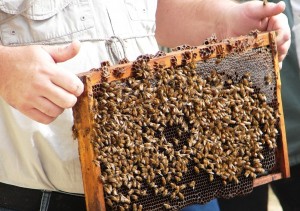
by Judy Biss | Mar 11, 2016
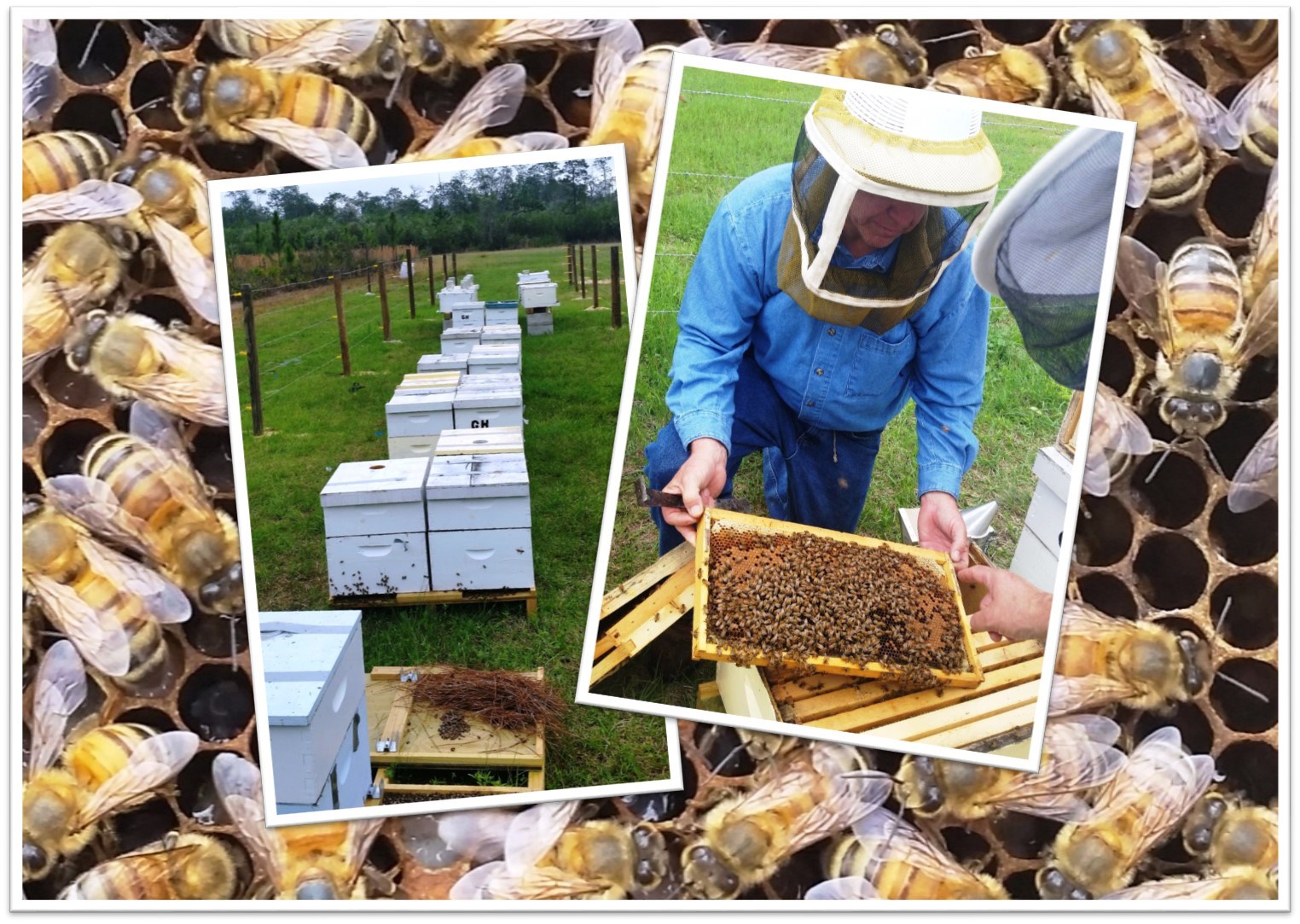 The Beekeeping in the Panhandle Working Group is pleased to offer the 5th Annual Beekeepers Field Day And Trade Show 2016 Beekeeping is one of the fastest growing hobby and commercial endeavors in Florida. There is much to learn and share about this fascinating trade.
The Beekeeping in the Panhandle Working Group is pleased to offer the 5th Annual Beekeepers Field Day And Trade Show 2016 Beekeeping is one of the fastest growing hobby and commercial endeavors in Florida. There is much to learn and share about this fascinating trade.
The workshop and trade show offers something for every level and interest, and this year’s event features:
- Extended Opportunities for Hands-On Open Hive Experiences
- Presentations on the Latest in Research-Based Beekeeping Management Practices
- Interaction With Expert Beekeepers
- Vendors with Beekeeping Equipment and Hive Products
- Door Prizes Include a Grand Prize Each Day of a 10-Frame Bee Hive!
Dates:
Friday April 1, 2016 and Saturday April 2, 2016
Place:
UF/IFAS Extension Washington County Office,
1424 Jackson Avenue, Chipley, FL 32428
850-638-6180
Time:
8:00 am – 5:00 pm each day
Registration:
Includes Lunch, Refreshments, Door Prize Tickets, & Educational Sessions
-
$25 for One Day or $40 for Both Days per Person
-
$10 Age 12 and Under Each Day
-
Late Fee of $10.00 after March 22nd.
Two ways to register:
For More Information Contact:
- UF/IFAS Extension Washington County at 850-638-6180
- UF/IFAS Extension Calhoun County at 850-674-8323
Download the printable flyer with agenda & details:
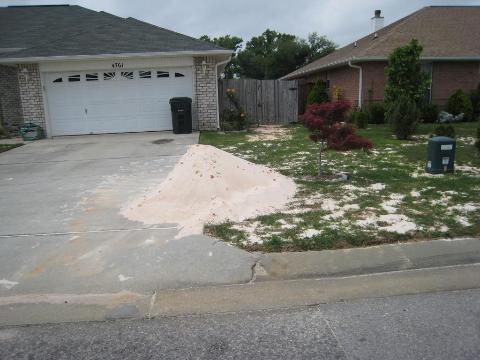
by Larry Williams | Mar 11, 2016
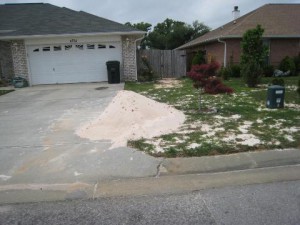
Topdressing material should be weed and nematode-free. Photo Credit: Bryan Unruh, UF/IFAS Turfgrass Specialist.
Q. I see some folks putting a layer of lawn dressing (usually sand) on their lawns in the spring. What’s the purpose for this and is it a good practice?
A. Routinely applying a layer of soil or sand to a lawn can cause more damage than good. This practice is sometimes referred to as topdressing. You can introduce weed seeds, nematodes and even diseases with some sources of lawn dressing. Basically, the only reasons to apply a layer of soil or sand to a lawn are to fill in low areas or bare areas, as a method of dealing with an identified thatch problem or possibly to cover surface tree roots.
Topdressing your lawn with sand on a regular basis is not a recommended practice.
Topdressing soil should be free of weeds and nematodes (sterilized is ideal) and should be of the same soil type (texture) as that on which the turf is currently growing.
While minor low spots can be corrected this way, you can easily overdo it and smother your lawn. Using topsoil from an unknown source may introduce undesirable plants and weeds into the landscape, creating additional work and expense to correct the problem.
It can be difficult to evenly spread the sand in a timely manner. Homeowners start with the best intentions of spreading the sand consistently and finishing by the end of the day only to find that the job is slow and difficult. The sand pile remains in the same spot for days, or longer, shading out and frequently killing the grass below. Once the initial enthusiasm wanes, just trying to reduce the mountain of sand overcomes the objective of spreading it consistently and evenly over the lawn. The end result is dozens of small mounds of sand all over the lawn.
To fill a low spot, shovel the sand, no more than about an inch or two deep, into the area. It’s best to maintain the lawn normally until the grass has grown on top of the first layer. Repeat until the low spot is filled.
Homeowners are sometimes convinced that topdressing will improve the condition of their lawn by increasing the spread and thickness of their turf.
“Topdressing home lawns has minimal agronomic benefits” according to Dr. Bryan Unruh, University of Florida Extension Turfgrass Specialist. When asked his advice for homeowners on topdressing, his reply was “don’t”.

by Molly Jameson | Mar 9, 2016
Please join UF/IFAS Leon County Agricultural and Horticultural Extension Agents as they present the:

The series will run from 6:00-8:00 PM on March 24 and March 31, 2016 at the Leon County Extension Office, located at 615 Paul Russell Road, Tallahassee, Florida 32301.
The two-day series will feature Extension Agents Mark Tancig, Molly Jameson, and Trevor Hylton as they discuss:
Garden site selection
Soil and fertilization
Spring planting and gardening techniques
Gardening in small spaces
Spring vegetable varieties
Common pests
Extension Demonstration Garden tour
Question and answer session
Light refreshments will be provided. Please wear closed-toe shoes on March 31, as we will tour the Leon County Extension Office Demonstration Garden, located on site.
The cost is $20 per person or $30 per couple, by cash or check at the door or by mail.
Please register by calling Genice at 850-606-5218.
For more information, contact Molly Jameson at mjameson@ufl.edu or by phone at 850-606-5219.

 According to the Atlas of Florida Vascular Plants, there are more than 4,200 plant species naturally occurring in the state. Nearly 3,000 are considered native. The Florida Native Plant Society (FNPS) defines native plants as “those species occurring within the state boundaries prior to European contact, according to the best available scientific and historical documentation.” In other words, the plants that grew in natural habitats that existed prior to development.
According to the Atlas of Florida Vascular Plants, there are more than 4,200 plant species naturally occurring in the state. Nearly 3,000 are considered native. The Florida Native Plant Society (FNPS) defines native plants as “those species occurring within the state boundaries prior to European contact, according to the best available scientific and historical documentation.” In other words, the plants that grew in natural habitats that existed prior to development.
 radicans), Yellow Jessamine (Gelsemium sempervirens) and Trumpet Honeysuckle (Lonicera sempervirens). The seeds and berries of Black-eyed Susan (Rudbeckia fulgida), Flowering Dogwood (Cornus florida) and Dahoon holly (Ilex cassine) provide vital food for songbirds, both local and migratory. Saw palmetto (Serenoa repens) provides cover for numerous birds and small mammals, as well as, reptiles.
radicans), Yellow Jessamine (Gelsemium sempervirens) and Trumpet Honeysuckle (Lonicera sempervirens). The seeds and berries of Black-eyed Susan (Rudbeckia fulgida), Flowering Dogwood (Cornus florida) and Dahoon holly (Ilex cassine) provide vital food for songbirds, both local and migratory. Saw palmetto (Serenoa repens) provides cover for numerous birds and small mammals, as well as, reptiles. While these plant species from other parts of the world may provide some of the resources needed by native wildlife, it comes at a cost to the habitat. These exotic plants can become “invasive”, meaning they displace native plants and change the diverse population into a monoculture of one species. Chinese privet (Ligustrum sinense), Popcorn trees (Triadica sebifera) and Cogongrass (Imperata cylindrica) have
While these plant species from other parts of the world may provide some of the resources needed by native wildlife, it comes at a cost to the habitat. These exotic plants can become “invasive”, meaning they displace native plants and change the diverse population into a monoculture of one species. Chinese privet (Ligustrum sinense), Popcorn trees (Triadica sebifera) and Cogongrass (Imperata cylindrica) have  changed the landscape of Florida over the past decade. While Water hyacinth (Eichhornia crassipes) and Hydrilla (Hydrilla verticillata) have change water flow in many rivers and lakes. These invasive species cost millions of taxpayer dollars to control.
changed the landscape of Florida over the past decade. While Water hyacinth (Eichhornia crassipes) and Hydrilla (Hydrilla verticillata) have change water flow in many rivers and lakes. These invasive species cost millions of taxpayer dollars to control.








